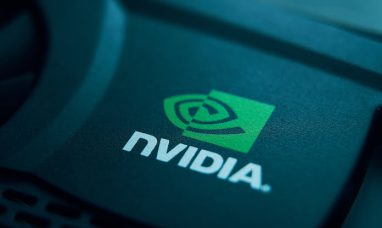Intel stock (NASDAQ:INTC) has surged more than 70% in 2025, making it one of the most closely watched names in the semiconductor sector. The catalyst? A monumental $5 billion investment from Nvidia (NASDAQ:NVDA) and a strategic partnership that could reshape the future of AI computing. This raises an important question for investors: Is Intel stock 2025 a buy, sell, or hold going into Q4?
Why Intel Stock 2025 Is Back in the Spotlight
The investment from Nvidia has put Intel back on the radar for Wall Street. Not only will Intel manufacture x86 chiplets for Nvidia’s AI infrastructure, but it will also produce consumer-grade RTX chiplet PCs. This collaboration cements ties between two semiconductor powerhouses and signals confidence in Intel’s foundry business.
Despite Nvidia continuing to rely on Taiwan Semiconductor Manufacturing (NYSE:TSM) for most of its chip production, its decision to inject capital directly into Intel represents a strategic U.S.-based hedge. With the geopolitical climate emphasizing domestic chipmaking, Intel stands to benefit from this national security-driven investment trend.
Intel Stock 2025 Performance and Valuation
Intel stock 2025 has traded between $17.67 and $36.30 in the past year, recently hovering near its highs. Its 71% year-to-date gain far exceeds the S&P 500 Index (INDEXSP: .INX), which has returned just 12% in the same period.
Still, valuations remain tricky. Intel carries no reliable forward P/E ratio due to earnings volatility. Its price-to-sales ratio of 284x and price-to-cash flow of 19.36x suggest that investors are betting heavily on Intel’s restructuring and AI-driven turnaround. The company pays a quarterly dividend of $0.125 per share, yielding 1.49%. However, given Intel’s focus on fab expansion, dividend growth is likely to remain limited.
Earnings Pressure Versus AI Tailwinds
Intel’s most recent earnings report disappointed, with Q2 2025 revenue at $12.9 billion—flat year-over-year and below analyst estimates. GAAP EPS showed a loss of $0.67, weighed down by $1.9 billion in restructuring charges and $800 million in impairments.
Looking ahead, management guided Q3 revenue between $12.6 billion and $13.6 billion, with expected EPS ranging from a $0.24 loss to breakeven. Though short-term profitability remains weak, cost-cutting measures—such as headcount reductions of 15% and scaling back European fab expansion—are improving long-term efficiency.
The Nvidia investment provides further validation of Intel’s turnaround. By producing CPUs for Nvidia’s data centers and next-generation AI-enabled PCs, Intel is positioning itself as a central player in the next wave of AI and edge computing.
Analyst Outlook for Intel Stock 2025
Wall Street remains divided on Intel stock 2025. Consensus currently sits at a “Hold” rating, with a price target of $25.43, implying 28% upside from current levels. However, projections vary widely, with estimates ranging from a bullish $43 to a bearish $14.
This broad forecast range highlights uncertainty around Intel’s execution. While bulls see Intel as an undervalued AI manufacturing powerhouse, skeptics argue that execution missteps, capital intensity, and continued competition from TSMC and Samsung (LSE:SMSN.L) could limit upside.
Final Verdict: Intel Stock 2025
Intel stock 2025 offers a high-risk, high-reward scenario. On one hand, Nvidia’s $5 billion investment signals faith in Intel’s foundry strategy and its ability to compete in the AI-driven semiconductor era. On the other, Intel’s earnings volatility and elevated valuations could pressure returns in the near term.
For long-term investors bullish on U.S. semiconductor independence and AI infrastructure, Intel may represent a buy-and-hold opportunity. For others wary of execution risks, a “Hold” might be the safer call heading into Q4 2025.
Featured Image: Freepik









